When Muni’s T-Third light rail line opened in 2007, we asked Market Street Railway’s historian, Phil Hoffman, to share his childhood memories of the old Third Street streetcar operation, along with some history of the lines that ran there.
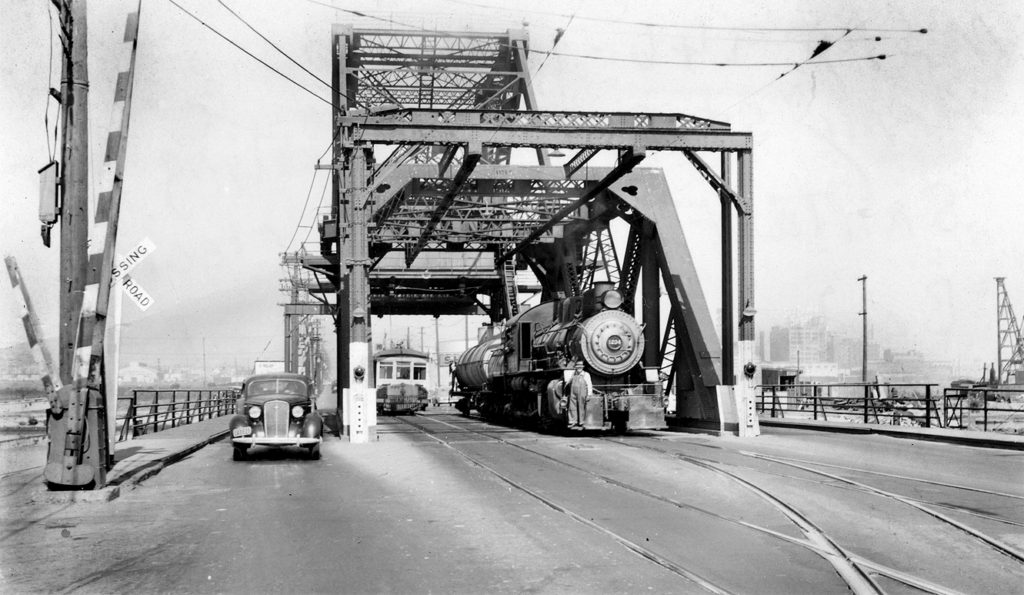
By Philip Hoffman (1930-2011)
Far from busy Third Street and its two streetcar lines, my childhood was spent in a quiet section of Cow Hollow which was “Dinky territory”, with center-door Municipal Railway E-line cars and the Market Street Railway Co. single truck Fillmore Hill counterbalance. Occasionally I would ride larger streetcars in the Marina, Pacific Heights, or Downtown.
My father, a doctor who made house calls, enlarged my world of transit considerably when he began taking me along on afternoon visits to his Greek and Italian patients in the Bayview District. They were kind, friendly people. “Bring the kid in,” they would say and I would eagerly gobble up the food they offered me, while listening proudly to my father speak to them in their native tongues.
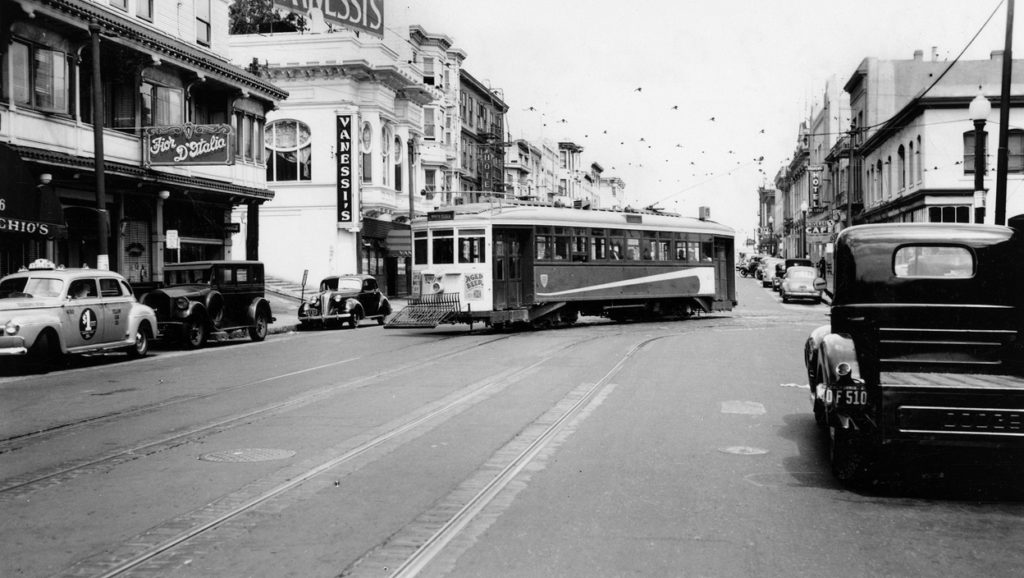
His gift for languages and gentle manner made him beloved by Third Street merchants as well as his patients. They would come and say hello to me while I was waiting for my father in our 1938 Buick Special, and often lingered to greet him when he came back to the car.
I remember Mr. Delanges, a large man with a small goatee, on Quesada Avenue–Esposto, the butcher on Third Street–the foreman of the San Francisco Tallow Works on Evans Avenue–and a number of others who treated us like royalty.
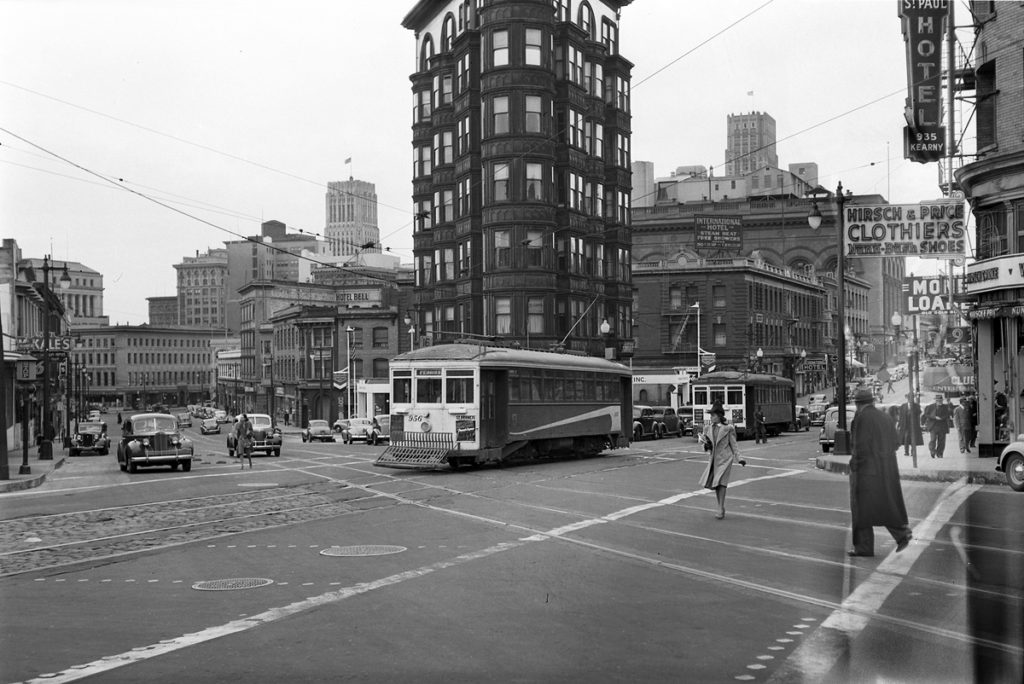
When waiting alone, I always had a Wonder Book on my lap, but the book remained unopened when a high-speed 16-line 941-class car came roaring by. On the drive home, I was also fascinated to see the ex-Williamsport 30-line one-man cars turning at Third & Army Streets (now Cesar Chavez Street; this was in the brief period when Market Street Railway was allowed to run streetcars with just one operator, and had bought small groups of used streetcars from other cities to take advantage of it).
Thanks to my father’s house calls and my growing interest, I became aware of the Third Street lines’ unique features…having their own ‘Third Street El’ over railroad crossings…sharing drawbridges with three railroads…crossing Muni’s E-line three times in the North Beach area…sharing Third Street with cattle on their ‘last roundup’ to the packing houses.
Third Street’s electric era began in 1894 when the first Market Street Railway Co. (MSRy)–owned by Southern Pacific–replaced the 33-year old horse cars. Their 1861 barn at 23rd & Kentucky was known as ‘My Old Kentucky Home’. By 1896, the two Third Street lines were completed. Starting from North Beach or the Ferries, they met at Kearny & Broadway. Continuing down Kearny, the two lines reached Market. Crossing Market, the lines continued down Third, Kentucky, Railroad Avenue, and San Bruno Road to the county line. Early in the 20th Century, Kentucky Street (from China Basin to Islais Creek) and Railroad Avenue (from Islais Creek to San Bruno Avenue) became part of Downtown’s Third Street, making Third the fourth-longest street in San Francisco.
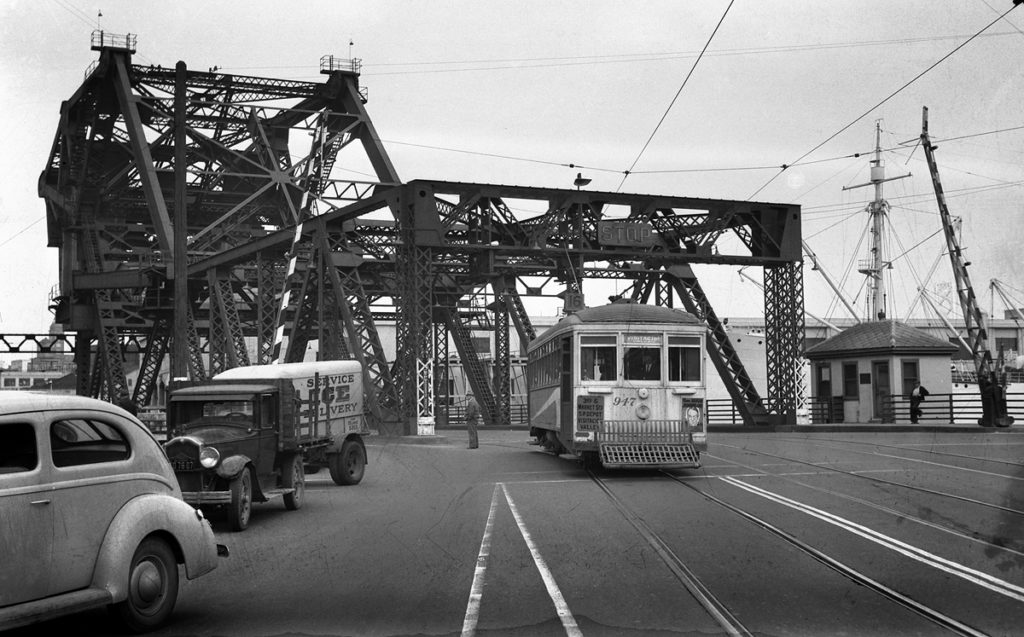
Numerous railroad crossings on Third between Mariposa and Fourth severely disrupted schedules, so around 1910, United Railroads built the half-mile ‘Third Street El’, a viaduct which whisked streetcars over the area. While New York City had its Third Avenue El, San Francisco had its own Third Street El.
One of San Francisco’s largest industries, the Bethlehem Steel Shipyard on the Third Street lines, went to wartime production in 1917 and built a massive streetcar track loop at 20th & Third to handle the shipyard crowds. Originally known as the Union Iron Works, their output had included the battleships Oregon and Ohio, cruisers Olympia and Oakland, ferryboats Berkeley, Fresno, El Paso, and Yosemite. They had also built half of the Municipal Railway’s first streetcar order in 1912, and another twenty cars in 1923. Oddly, all the dash signs until 1946 referred to the company by its original Union Iron Works name.
Under new ownership in 1921, the Third Street lines prospered. Having all the SP Depot business and–despite Prohibition–the North Beach night life crowds caused the 29-line to be extended from Broadway to Jefferson. In fact, Third became second only to the Mission lines in passengers carried. In 1927, MSRy opened a new commuter line, the 41, running from Market via Second, Brannan, and Third to the SP Depot, then at Third & Townsend Streets. In the early thirties, 25 of MSRy’s fastest cars were assigned to the 16- and 29-lines where they could speed on wide-open outer Third and over the elevated viaduct. The end of the cattle drives also helped to make Third a major shopping street with theaters, churches, and its own opera house.
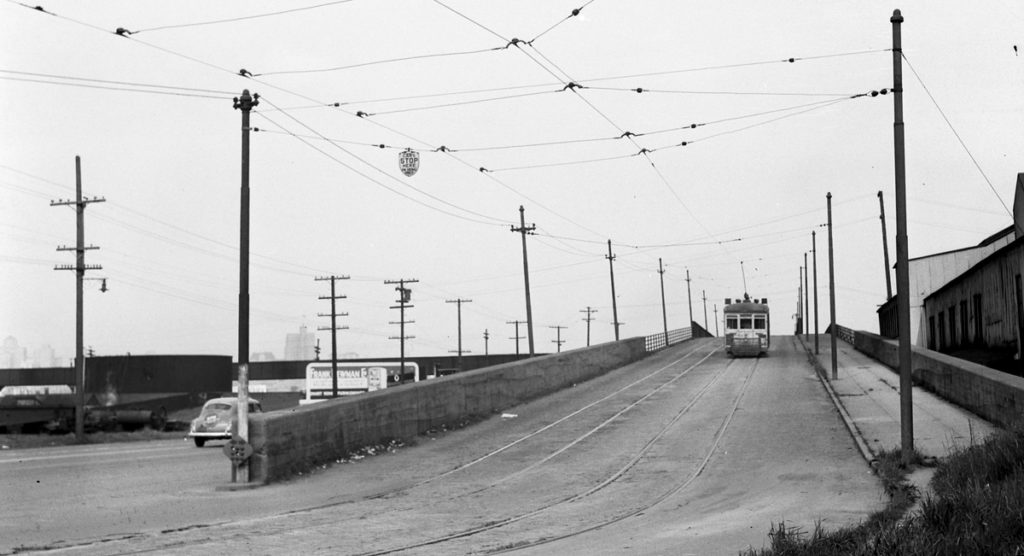
In 1934, after much effort, MSRy got a permit that allowed one-man operation of streetcars. In 1935, many cars were rebuilt for this purpose. In addition, second-hand cars were obtained from East St. Louis and Williamsport. The Kentucky Barn had the distinction of being the only one-man barn in San Francisco.
In 1938, MSRy received a staggering blow–the one-man operating permit was nullified by a court ruling. In order to survive, MSRy had to resort to the one-man bus. The 15- and 16-lines got Sunday buses in June 1940. By 1941, all the ex one-man lines except the 20 and 22 had all or part-time bus service.
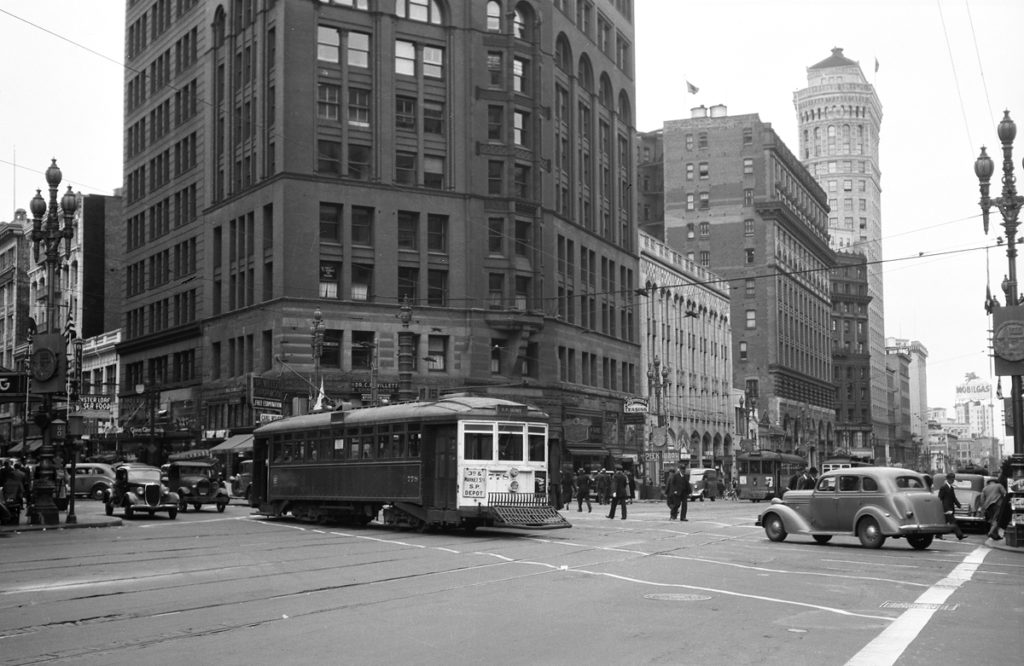
About this time, rumblings were heard in City Hall about widening Third Street to lessen the increasing traffic on Bayshore Boulevard, which served as US 101 before the freeway was built. MSRy was happy to cooperate in this program. On the weekend of May 10, 1941, the biggest bus conversion occurred. Third Street lines 15, 16, 29, and 42 were replaced by motor coaches. The oldest barn with the newest cars–Kentucky–was closed. Its cars went to the Geneva Barn (home to today’s F-line fleet), which enabled the retirement of the massive 1600-class of streetcars. To handle the Peninsula SP train commuters on the following Monday, the 20-line cars were extended from the SP Depot up Third and Kearny to Broadway in the peak hours. Cleveland Wrecking Company demolished the Kentucky Barn and made the property their San Francisco office. Thereafter, we had the visual treat of old doorframes, washstands, bathtubs, water closets, and other debris covering the site.
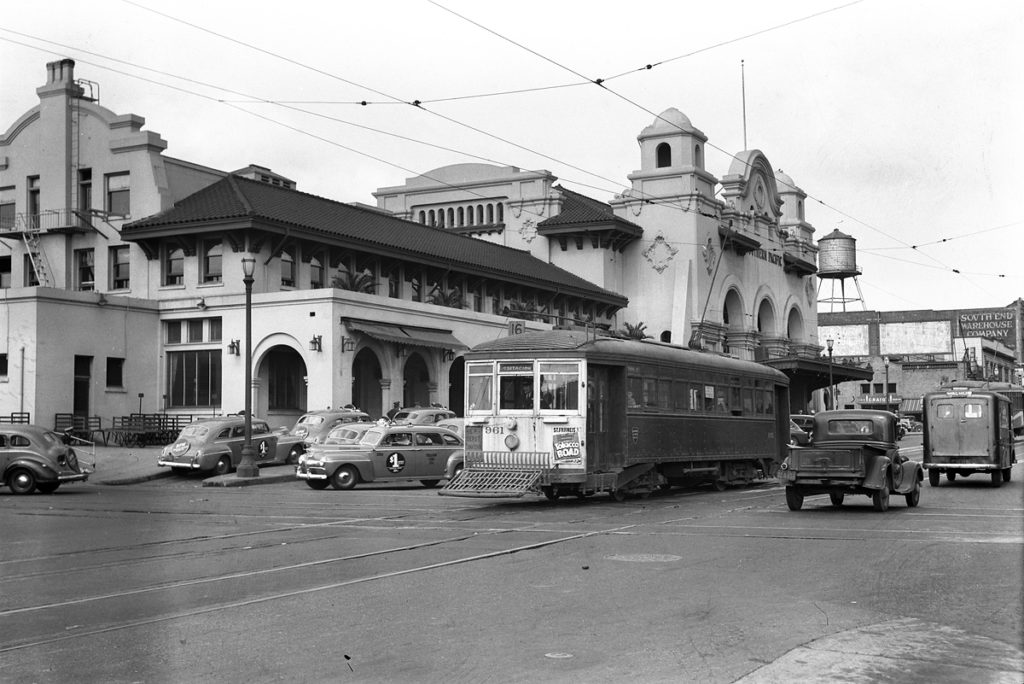
The year 1940 brought deep personal sadness with my father’s untimely death late in the year. Our happy trips to Third Street were over. Although my mother drove out there now and then, my trips with her became infrequent. I only went to see the streetcars. My last trip was a shocker. The roar of the 16-line cars was replaced by the deafening staccato of jackhammers digging up the pavement for track removal. That was the end of Third Street for me for quite awhile.
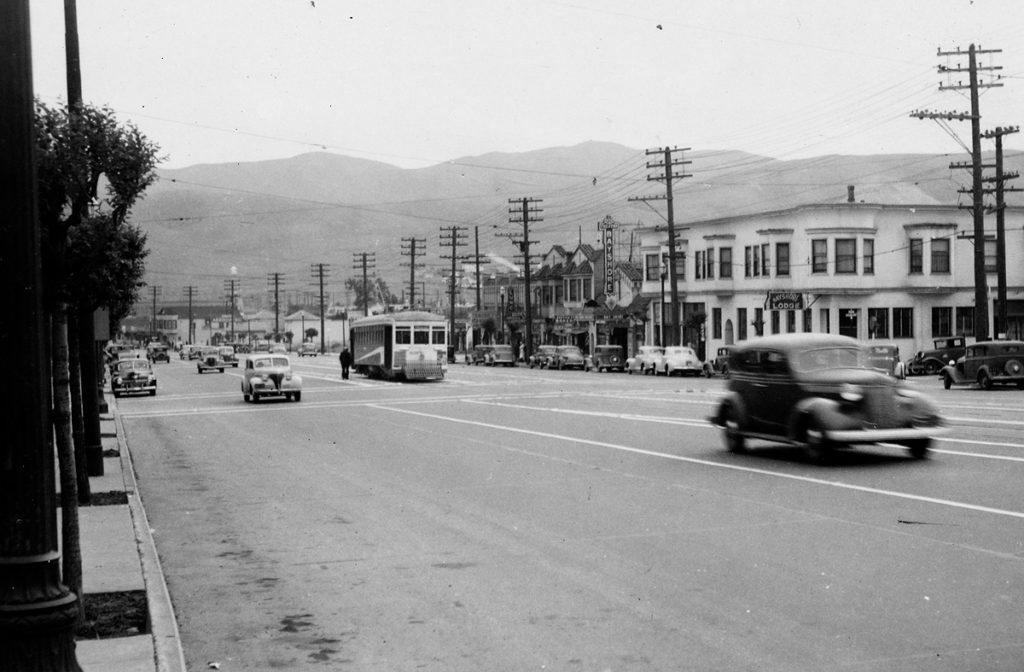
Some months after Third Street motorization, the wide trackless street, with gas rationing and war, had few autos on it. With war production gearing up, plans were made for partial restoration of Third Street rail service. In April 1943, a new 16-line, running six days a week, ran from the SP Depot over Third, Kearny, Broadway, and Powell to Bay Street–the old 15-line. In May, an extension was made south of the SP Depot over the drawbridge and the ‘Third Street El’ to Mariposa, beyond which the streetcar track had been ripped out. But by connecting to a Santa Fe railroad spur, using hastily erected overhead wire, the 16-line cars were able to reach the former Union Iron Works two blocks south, at 19th Street & Illinois
To accommodate wartime loads, many former one-man cars had their bulkheads and leather seats removed and replaced by lengthwise seats. In honor of the old Butchertown days, these cars were known as ‘cattlecars’. When I first rode one in 1942, my feet dangled in the air. On my last cattlecar ride in 1948, I was able to plant them firmly on the floor.
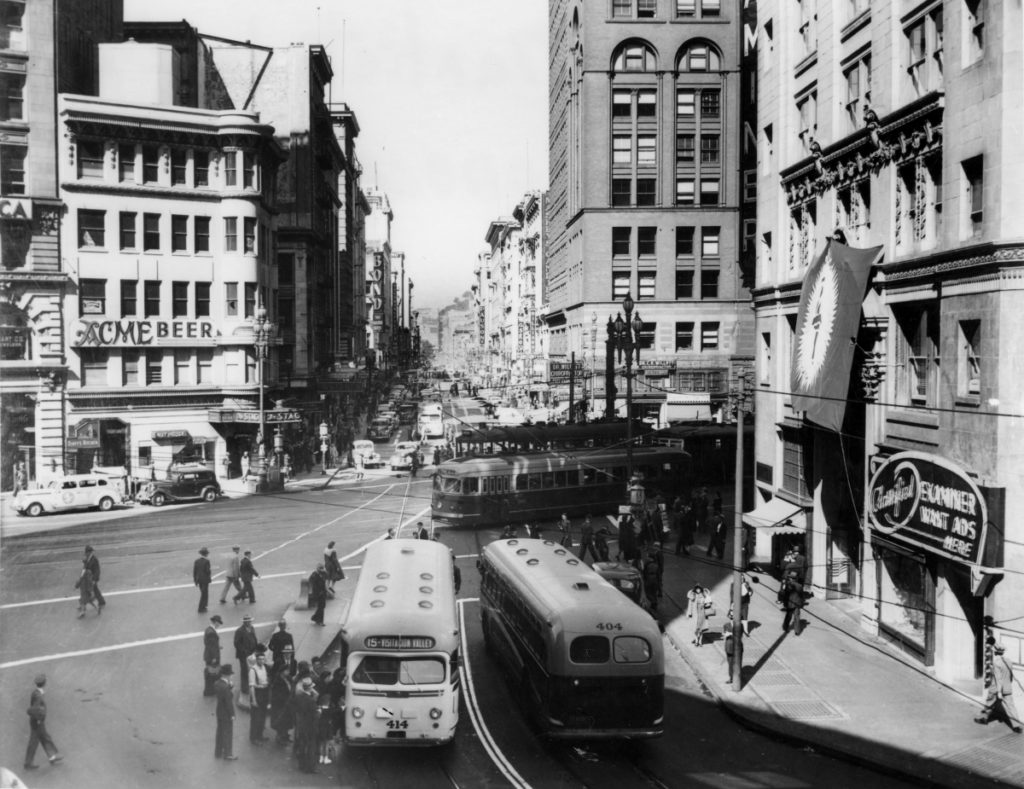
The restored 16-line cars ran without number plates and roll signs–just a dash sign reading “Union Iron Works, Broadway and Davis, SP Depot or North Beach”. During my souvenir hunting at the Funston Boneyard–the Sunset District facility where MSRy took old streetcars to die–I acquired a ’16’ number plate. I decided to make a donation. When idle, the 16-line cars were stored on the Masonic side of the McAllister Barn. Masonic is on an uphill grade, so I was able to pad up to the roof level of car No. 291 and drop the ’16’ into the roof holder. I later noticed that No. 291 had gone into service. The next day I read in the San Francisco News that it had a run-in with a garbage truck, which required a trip to the Elkton Shops.
With the war’s end, the closing of the shipyards, and the arrival of new buses, the 16-line was a prime candidate for motorization, and closed in 1946. After the last 16-line car pulled in on October 5, the tracks on Third, Kearny, Broadway, and Mason were used for a few weeks by motor-flat work streetcars making nocturnal cable deliveries to the cable car barn.
The rush hour 41-line (later an extension of the F-Stockton) continued to use a block of Third Street on its depot runs from Second & Market. Muni replaced the line with buses in December, 1949. I wasn’t able to ride the last car on Third–the street of cattle drives, drawbridges, and the Third Street El–because I was 3,180 miles east, riding the Third Avenue El!
Today, the faces and places of my childhood memories are gone, but with the cars of the new T-line now running, the dream of vibrant renewal for tired old Third Street should become an exciting reality.
Thank you for sharing these wonderful memories. They give the photos, maps and drawings on this site a more 3-dimensional, human element.
How about a picture of the Stockton St. tunnel?
Next up is the B-Geary car on the Cliff House section with the run-away switch in the curve before the end of line shed.
Thanks for the great 3rd St. pix.
A correction thanks to an anonymous commenter. June 30 is the date of the service changes which combined the K and T lines. April 17 was the actual opening day of the T-line. I was a little later on this than I thought.
Thanks for the remembrances. They remind me that this is an interesting time to live in as we see the resurgence of street..I mean light rail in North America. It’s amazing to think about the system that used to be in place in San Francisco, though. Petty much every major street had a streetcar line on it.